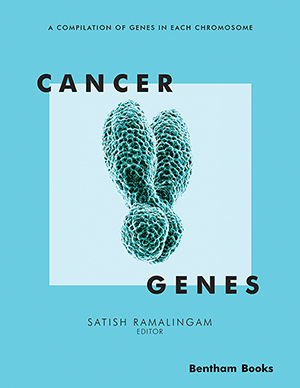Abstract
One of the major disturbing pathways within cancer is “The Kirsten rat sarcoma viral oncogene homolog (KRAS) pathway”, and it has recently been demonstrated to be the most crucial in therapies and diagnostics. KRAS pathway includes numerous genes. This multi-component signaling system promotes cell growth, division, survival, and death by transferring signals from outside the cell to its interior. KRAS regulates the activation of a variety of signaling molecules. The KRAS oncogene is a key player in advancing a wide range of malignancies, and the mutation rank of this gene is a key feature of several tumors. For some malignancies, the mutation type of the gene may offer information about prognostic, clinical, and predictive. KRAS belongs to the RAS oncogene family, which consists of a compilation of minor GTP-binding proteins that assimilate environmental inputs and trigger internal signaling pathways that control survival, cell differentiation, and proliferation. This review aims to examine the recent and fascinating breakthroughs in the identification of new therapies that target KRAS, including the ever-expanding experimental approaches for reducing KRAS activity and signaling as well as direct targeting of KRAS. A literature survey was performed. All the relevant articles and patents related to the KRAS pathway, the mutation in the KRAS gene, cancer treatment, and diagnostics were found on PubMed and Google Patents. One of the most prevalent causes of cancer in humans is a mutation in the K-RAS protein. It is extremely difficult to decipher KRAS-mediated signaling. It allows transducing signals to go from the cell's outer surface to its nucleus, having an influence on a variety of crucial cellular functions including cell chemotaxis, division, dissemination, and cell death. Other involved signaling pathways are RAF, and the phosphatidylinositol 3 kinase also known as AKT. The EGFR pathway is incomplete without KRAS. The activation of PI3K significantly contributes to acquiring resistance to a mixture of MEK inhibitors and anti-EGFR in colorectal cancer cell lines which are mutated by KRAS. A series of recent patent studies towards cancer diagnostics and therapeutics reveals the paramount importance of mutated protein KRAS as an extensive driver in human tumors. For the prognosis, diagnosis, and treatment of colorectal cancer, KRAS plays a critical role. This review concludes the latest and vowing developments in the discovery of novel techniques for diagnosis and drugs that target KRAS, the advancements in experimental techniques for signaling and inhibiting KRAS function, and the direct targeting of KRAS for cancer therapeutics.
Keywords: Colorectal cancer, KRAS, anemia, EGFR pathway, c-Raf, malignancies, apoptosis.
[http://dx.doi.org/10.1016/j.ctrv.2021.102309]
[http://dx.doi.org/10.1186/s12943-021-01441-4]
[http://dx.doi.org/10.1038/s41392-021-00780-4]
[http://dx.doi.org/10.1186/s13046-018-0719-1]
[http://dx.doi.org/10.1172/jci.insight.153688]
[http://dx.doi.org/10.1038/nrd4389]
[http://dx.doi.org/10.1186/s12943-022-01629-2]
[http://dx.doi.org/10.1309/AJCP7FO2VAXIVSTP]
[http://dx.doi.org/10.1093/annonc/mdw235]
[http://dx.doi.org/10.1242/jcs.01660]
[http://dx.doi.org/10.1016/j.ymeth.2005.05.018]
[http://dx.doi.org/10.1016/s1556-0864(15)31506-9]
[http://dx.doi.org/10.1016/j.cell.2007.07.001]
[http://dx.doi.org/10.1155/2010/150960]
[http://dx.doi.org/10.1016/j.cell.2017.06.009]
[http://dx.doi.org/10.1177/1947601911408079]
[http://dx.doi.org/10.1038/nrc969]
[http://dx.doi.org/10.1126/science.275.5308.1943]
[http://dx.doi.org/10.1016/j.molcel.2008.08.007]
[http://dx.doi.org/10.1016/j.molcel.2008.07.024]
[http://dx.doi.org/10.1038/sj.onc.1210411]
[http://dx.doi.org/10.1128/MCB.01359-08]
[http://dx.doi.org/10.1016/s1534-5807(02)00364-7]
[http://dx.doi.org/10.3389/fphys.2012.00475]
[http://dx.doi.org/10.1002/eji.201040349]
[http://dx.doi.org/10.3390/bios12080597]
[http://dx.doi.org/10.3390/cimb44040106]






























